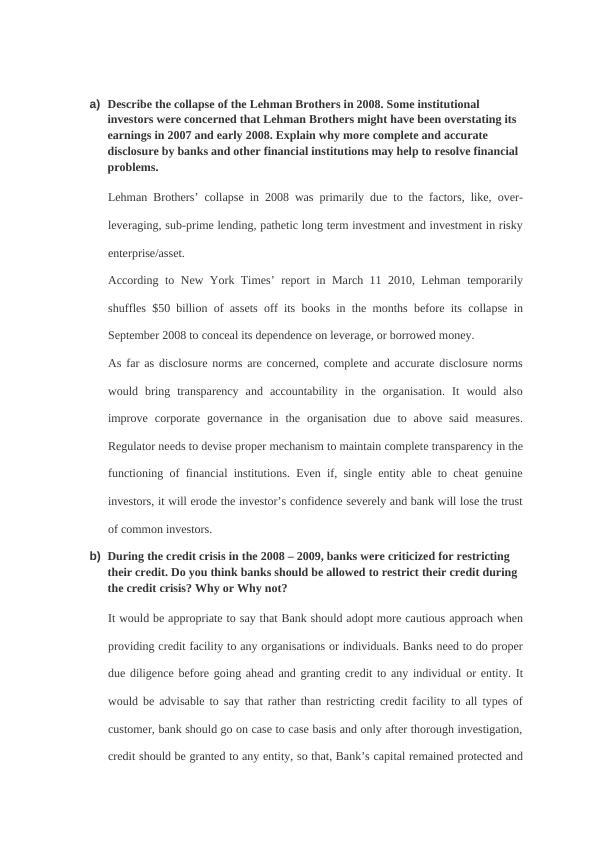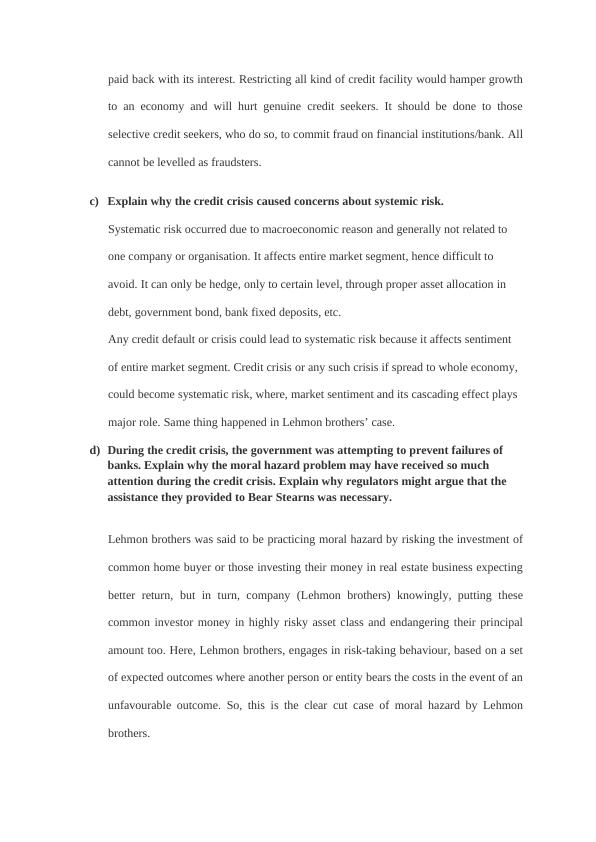Collapse of Lehman Brothers in 2008
4 Pages918 Words383 Views
Added on 2022-11-28
About This Document
This article discusses the collapse of Lehman Brothers in 2008 and the reasons behind it, such as over-leveraging and sub-prime lending. It also explores the importance of complete and accurate disclosure by banks and other financial institutions in resolving financial problems. The article further examines the concerns about systemic risk caused by the credit crisis and the moral hazard problem that received attention during that time. It concludes by explaining why regulators argued that the assistance provided to Bear Stearns was necessary.
Collapse of Lehman Brothers in 2008
Added on 2022-11-28
ShareRelated Documents
End of preview
Want to access all the pages? Upload your documents or become a member.
Insurance and Reinsurance Finance Assignment
|4
|730
|23
(PDF) The Concept of Systemic Risk
|11
|3784
|50
Why Lehman Brothers Filled for Bankruptcy in 2008
|8
|2482
|65
Corporate Financial Management: Causes and Impacts of Global Financial Crisis
|12
|2860
|191
Global Financial crisis 2008 PDF
|7
|1920
|130
ASA 701: Disclosures and Key Audit Matters in the Mining Industry
|15
|3779
|68


